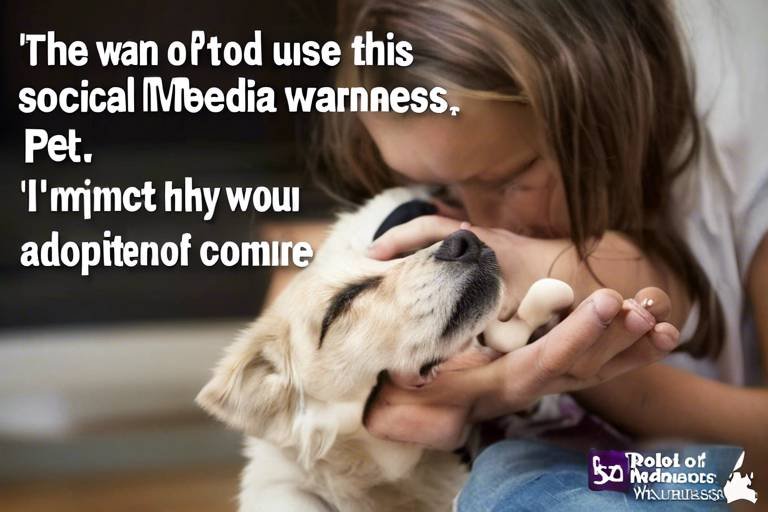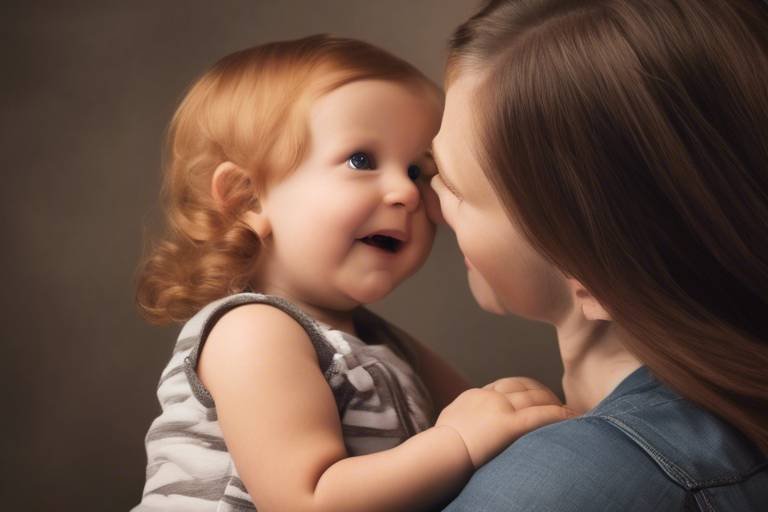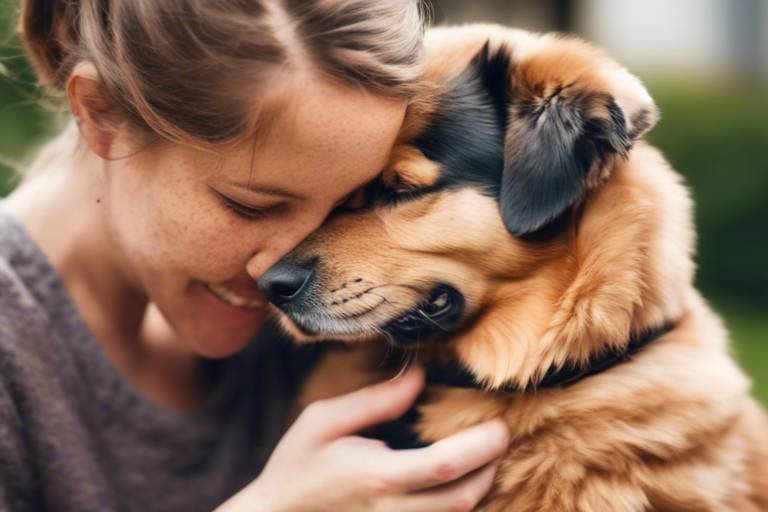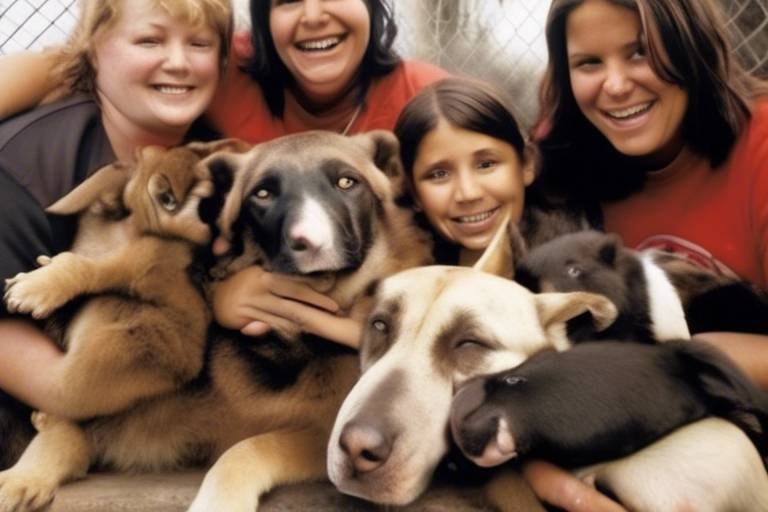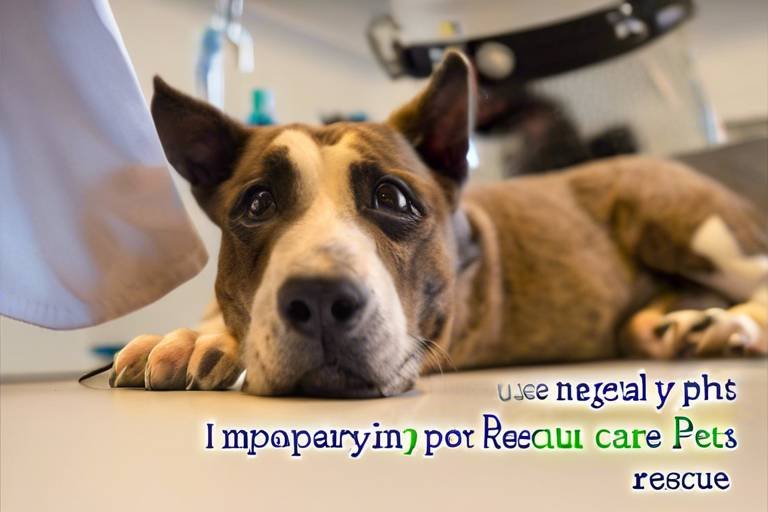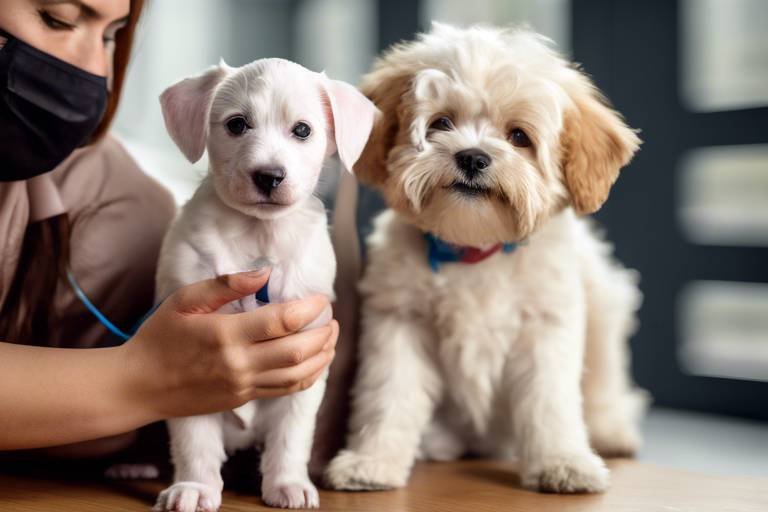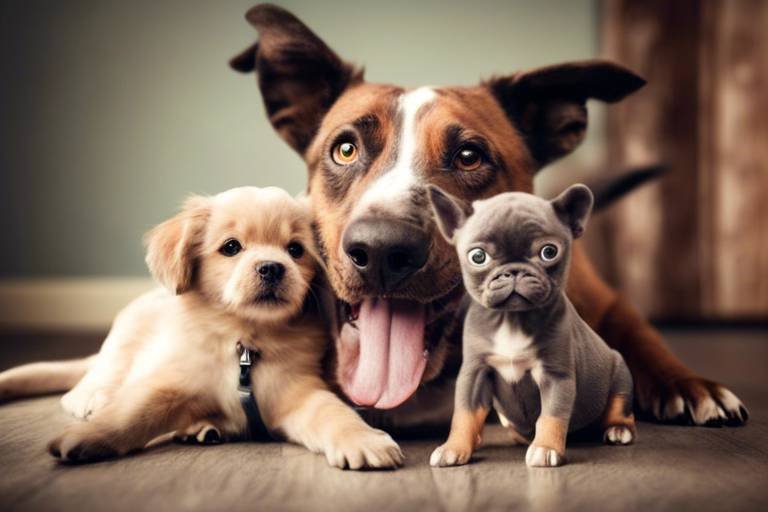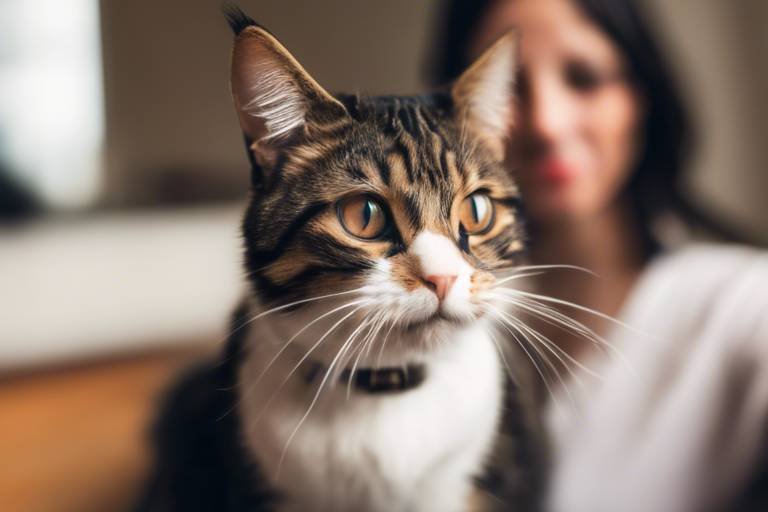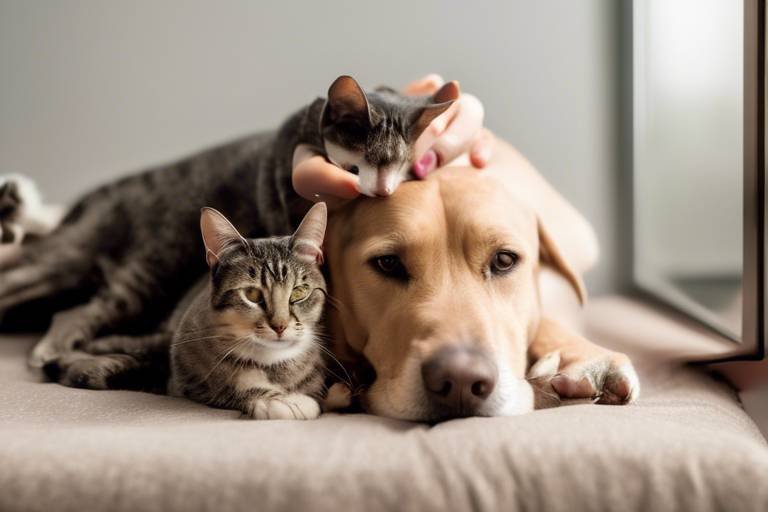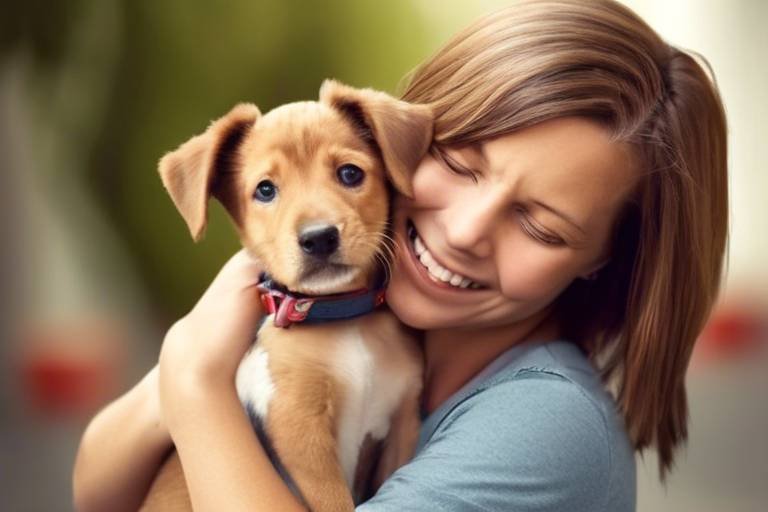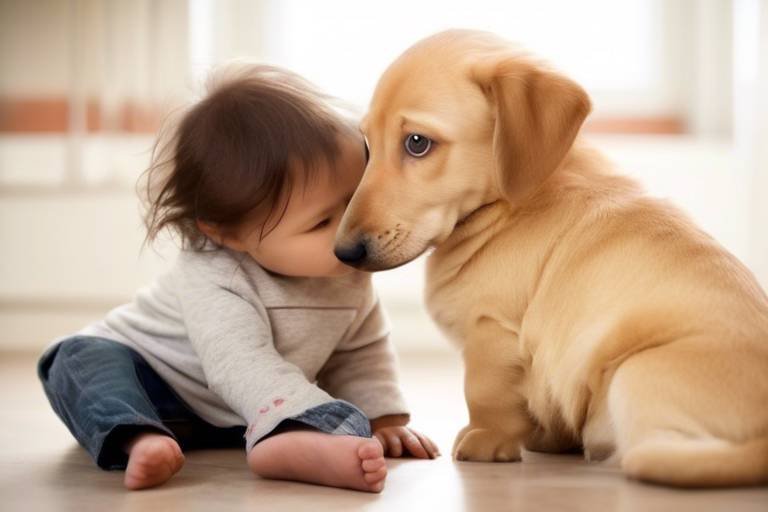The Role of Social Media in Pet Adoption Awareness
In today's digital age, social media has transformed the way we communicate, share information, and connect with one another. One of the most heartwarming impacts of this phenomenon is its role in enhancing pet adoption awareness. Platforms like Facebook, Instagram, and Twitter have become vital tools for animal shelters and rescue organizations, allowing them to reach potential adopters far and wide. But how exactly does social media facilitate pet adoption? Let's dive into the various ways it enhances awareness and connects furry friends with loving homes.
First and foremost, social media provides a platform for shelters to showcase their available pets. Think about it: instead of waiting for people to walk through their doors, shelters can now share adorable photos and videos of pets needing homes with thousands of followers at the click of a button. This ability to reach a larger audience means that more people are exposed to the idea of adopting a pet, which can lead to increased adoption rates. It's like casting a wide net in the ocean of potential adopters, where every like, share, or comment can help a pet find its forever home.
Moreover, social media allows shelters to create a sense of community among pet lovers. It’s not just about finding homes for animals; it’s about building connections. When people see posts from shelters, they often engage by sharing their own experiences, advice, and even tips on pet care. This sharing of knowledge fosters a supportive environment that encourages more individuals to consider adoption. The more we talk about pet adoption, the more it becomes a norm in our communities. Imagine a world where adopting a pet is as common as getting a coffee; that’s the power of social media!
In addition, social media can amplify the stories of successful adoptions, creating a ripple effect that inspires others. When a shelter shares a heartwarming story of a pet that found its forever home, it not only celebrates that animal's journey but also motivates others to consider adopting. It's like a beacon of hope that shines brightly, encouraging potential adopters to take the leap. These stories can be shared in various formats, from short videos to detailed posts, and they resonate deeply with audiences, often leading to increased inquiries about available pets.
Ultimately, the role of social media in pet adoption awareness is multifaceted. It’s a powerful tool that shelters can use to connect with communities, share compelling stories, and inspire action. As we continue to embrace the digital age, the potential for social media to change the landscape of pet adoption is boundless. So, whether you're a shelter looking to increase your reach or a pet lover wanting to help, remember that every post, share, and comment can make a difference in the life of a pet in need.
- How can I help promote pet adoption on social media?
Share posts from local shelters, use relevant hashtags, and tell your own adoption story to inspire others. - What types of content are most effective for promoting pet adoption?
High-quality images, videos, success stories, and behind-the-scenes content resonate well with audiences. - Can I adopt a pet through social media?
While you can't complete the adoption process entirely through social media, many shelters provide links to their adoption applications and procedures.
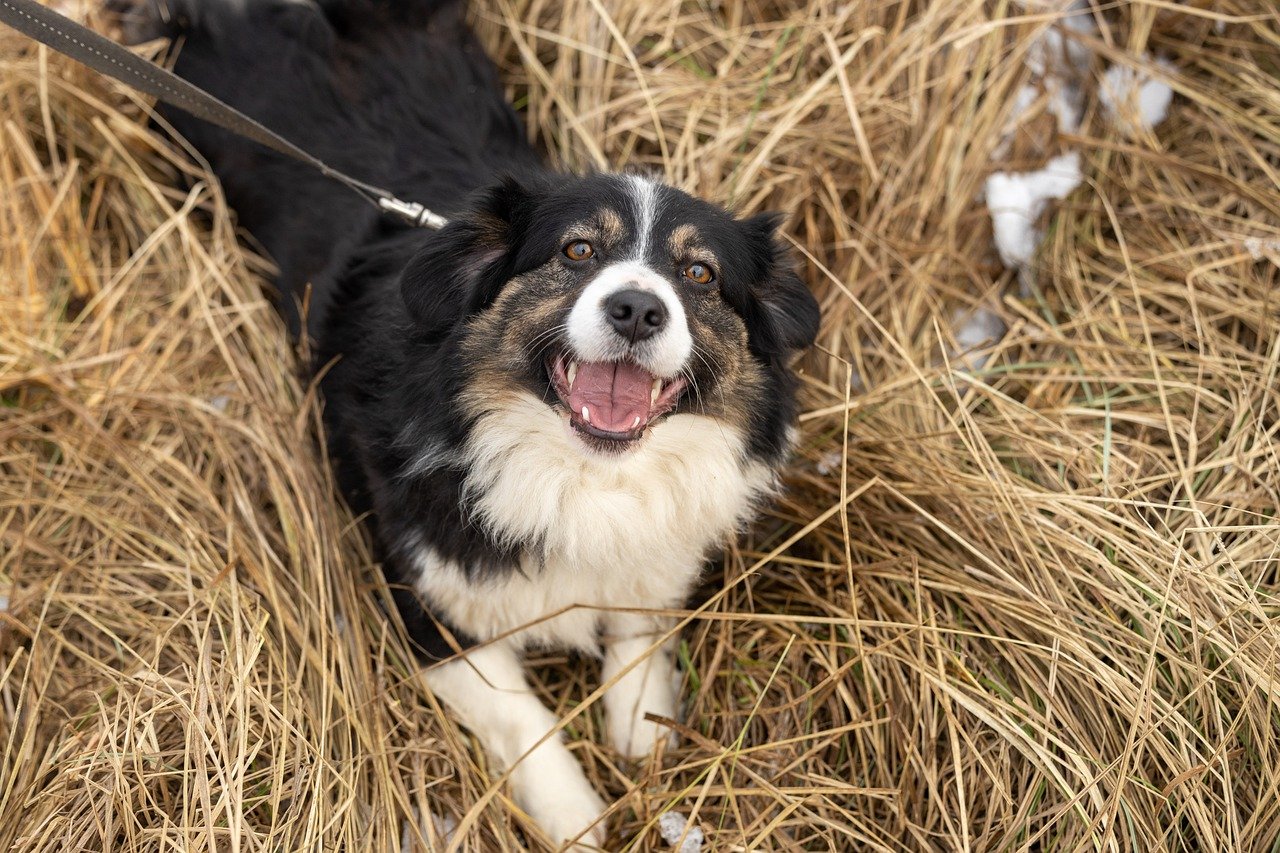
The Impact of Social Media on Pet Adoption Rates
Social media has revolutionized the way we connect, communicate, and share information. In the realm of pet adoption, its influence is nothing short of remarkable. With millions of users scrolling through their feeds daily, animal shelters and rescue organizations now have an unprecedented opportunity to reach a wider audience than ever before. Imagine a small local shelter that once struggled to find homes for its furry residents suddenly having the ability to showcase their adoptable pets to thousands of potential adopters with just a few clicks! This is the power of social media.
Platforms like Facebook, Instagram, and Twitter allow shelters to share compelling stories and visuals that resonate with pet lovers. The ability to post high-quality images and engaging videos of animals looking for homes can create emotional connections that traditional advertising methods simply can't achieve. In fact, studies have shown that posts featuring adorable pet photos can lead to a surge in adoption inquiries, as people are often drawn to the cuteness factor, making them more likely to share these posts with their friends and family.
Moreover, social media enables shelters to run targeted campaigns that can significantly boost adoption rates. By utilizing specific hashtags, creating shareable content, and engaging with followers, shelters can foster a sense of community and urgency around pet adoption. For instance, campaigns like #AdoptDontShop or #RescuePets can spread like wildfire, encouraging people to consider adopting instead of buying pets from breeders. This shift in mindset is crucial for reducing the number of animals in shelters and finding loving homes for them.
To illustrate the impact of social media on pet adoption, consider the following statistics:
| Platform | Adoption Increase (%) |
|---|---|
| 45% | |
| 60% | |
| 30% |
As we can see from the table, each social media platform plays a vital role in enhancing adoption rates, with Instagram leading the charge. The visual nature of Instagram makes it particularly effective for showcasing pets, while Facebook's community-oriented features allow shelters to engage directly with potential adopters.
In addition to increasing visibility, social media also facilitates the sharing of vital information about pet adoption processes, available pets, and upcoming events. This constant stream of information keeps the community informed and engaged, making it easier for potential adopters to take that crucial first step. By fostering a supportive environment online, shelters can encourage more people to visit their facilities and ultimately adopt a pet.
In conclusion, the impact of social media on pet adoption rates cannot be overstated. It has transformed the way shelters connect with potential adopters, making it easier than ever to find loving homes for animals in need. As we continue to navigate this digital age, harnessing the power of social media will remain essential for the animal welfare movement, ensuring that every pet has a chance at a happy life.

Engaging Content Strategies for Animal Shelters
In the digital age, where attention spans are shorter than a cat’s nap, animal shelters must adopt engaging content strategies to capture the hearts of potential adopters. It's not enough to simply post a picture of a dog or cat; shelters need to create a narrative that draws people in and encourages them to take action. Think of your posts as a bridge connecting the shelter with the community, where each piece of content serves as a stepping stone leading towards adoption.
One effective approach is through storytelling. Each animal has a unique story just waiting to be told. Whether it’s a brave rescue from a tough situation or a playful puppy’s first day at the shelter, sharing these narratives can evoke emotions and foster deeper connections. For instance, a post that details a shy dog’s journey to trust can resonate with many who understand the importance of patience and love.
Moreover, visuals play a crucial role in capturing attention. High-quality images and videos can make a world of difference. A simple, candid video of a cat playing with a toy can be more engaging than a static photo. When potential adopters see these animals in action, it humanizes them and makes them more relatable. It’s like watching a movie trailer that makes you want to see the full film—those visuals can be the tipping point that leads to an adoption inquiry.
Utilizing visual storytelling can transform how shelters communicate with their audience. For example, an animal shelter might create a series of posts showcasing a pet's day-to-day life, from mealtime to playtime, effectively painting a picture of what life would be like for that animal in a loving home. This not only highlights the pet’s personality but also showcases the joy they can bring into someone’s life. Imagine scrolling through your feed and seeing a heartwarming video of a dog learning to fetch—how could you resist wanting to adopt that pup?
Another engaging strategy is to share success stories of pets that have found their forever homes. These narratives can serve as powerful motivators for others to consider adoption. When people see the transformation of a once-timid shelter dog blossoming in a loving environment, it inspires hope and action. It’s like a motivational speaker for animal welfare—uplifting and encouraging others to make a difference.
Don’t forget about the behind-the-scenes content! Showcasing the daily operations at the shelter can humanize the staff and create a connection with the audience. Sharing candid moments of staff caring for the animals, or even the challenges they face, can foster empathy and support from the community. It’s a reminder that adopting a pet is not just about the animal; it’s about the people who dedicate their lives to ensuring these pets are well cared for.
In today’s social media landscape, partnering with influencers can amplify the shelter's message. Influencers have the power to reach vast audiences, and their endorsement can lend credibility to the cause. When a popular local figure shares a post about adopting a pet, it can spark interest and drive traffic to the shelter’s website. It’s like having a friend vouch for you—people are more likely to take action when they see someone they trust supporting a cause.
In conclusion, animal shelters must embrace engaging content strategies that not only showcase the animals but also tell their stories, inspire others, and build community. By utilizing visuals, sharing success stories, and fostering connections through behind-the-scenes glimpses, shelters can create a compelling narrative that resonates with potential adopters. Remember, every post is an opportunity to change a life—let’s make them count!
1. How can I help my local animal shelter with their social media?
You can help by sharing their posts, volunteering to create content, or even donating your photography skills to capture the pets in the best light.
2. What types of content perform best on social media for pet adoption?
Typically, engaging visuals, heartwarming success stories, and behind-the-scenes content resonate well with audiences and encourage shares.
3. How often should animal shelters post on social media?
Regular posting is key! Aim for at least a few times a week to keep your audience engaged and informed about available pets.
Visual Storytelling: Showcasing Pets
In the world of social media, visual storytelling has emerged as a powerful tool for animal shelters and rescues. When it comes to showcasing pets, a picture is not just worth a thousand words—it's often the difference between a pet finding a forever home or remaining in a shelter. High-quality images and engaging videos can captivate potential adopters, drawing them into the unique personalities of each animal. Imagine scrolling through your feed and coming across an adorable puppy with a quirky expression or a charming cat peeking out from behind a curtain. These visuals can evoke an emotional response that text alone simply cannot achieve.
Moreover, the importance of authenticity in visual content cannot be overstated. People are drawn to genuine moments, and when shelters share candid shots of pets playing, interacting with staff, or snuggling up with volunteers, it creates a narrative that resonates with viewers. This connection can lead to shares, likes, and comments, amplifying the reach of the post and increasing the chances of adoption. When potential adopters see pets enjoying life in a shelter, it helps them envision the joy these animals could bring into their own homes.
Additionally, incorporating videos into social media strategies can significantly enhance engagement. Short clips showcasing a pet's personality—like a dog fetching a ball or a cat purring contentedly—can be incredibly persuasive. As viewers watch these adorable antics, they may feel compelled to share the content with friends or family, further spreading the message of adoption. In fact, studies have shown that videos generate more engagement than static images, making them a vital part of any shelter's social media toolkit.
To make the most of visual storytelling, shelters should consider the following strategies:
- Use High-Quality Images: Invest in good photography equipment or collaborate with local photographers to capture pets in their best light.
- Showcase Individual Personalities: Highlight the unique traits of each pet, whether it’s a goofy grin or a playful attitude.
- Incorporate User-Generated Content: Encourage adopters to share photos and videos of their pets after adoption, creating a sense of community and showcasing success stories.
In conclusion, visual storytelling is more than just showcasing pets; it's about creating a compelling narrative that connects with potential adopters on an emotional level. By leveraging high-quality visuals and engaging content, animal shelters can significantly enhance their outreach efforts, ultimately leading to more successful adoptions. So, next time you scroll through your social media feed, remember that behind every adorable photo is a pet waiting for a loving home.
Q: How can I help my local shelter with their social media efforts?
A: You can volunteer your time to take photos, share their posts on your own social media, or even help them create engaging content.
Q: What types of visuals are most effective for pet adoption posts?
A: High-quality images and videos that showcase the pet's personality, such as playful moments or interactions with people, tend to be the most effective.
Q: How often should shelters post on social media?
A: Consistency is key! Aim for at least a few posts per week to keep your audience engaged and informed about available pets.
Success Stories: Inspiring Others
When it comes to pet adoption, nothing tugs at the heartstrings quite like a success story. These narratives not only showcase the transformative journeys of our furry friends but also serve as powerful motivators for potential adopters. Imagine scrolling through your social media feed and coming across a post featuring a once-neglected dog who has now found a loving home. That image, paired with a heartfelt story of resilience and love, can ignite a spark of hope in anyone considering adoption.
Success stories create a ripple effect that resonates within the community. They highlight the impact of adoption not just on the animals, but also on the families who choose to bring them into their lives. For instance, a post detailing how a shy, abandoned cat blossomed into a playful companion can encourage others to look beyond a pet's past and see the potential for a beautiful future. These stories remind us that every animal deserves a second chance, and they inspire others to take that leap of faith.
Moreover, sharing these narratives on social media can significantly enhance engagement. When shelters post before-and-after photos of adopted pets, they invite followers to witness the transformation firsthand. This visual storytelling method not only captivates audiences but also encourages them to share these posts, widening the reach of the message. The more people who see these success stories, the greater the likelihood of inspiring someone to adopt a pet themselves.
To maximize the impact of these success stories, animal shelters can consider the following strategies:
- Highlight Diverse Experiences: Share stories of various pets, including those with special needs or older animals, to demonstrate that love knows no boundaries.
- Incorporate Videos: Short video clips showing adopted pets in their new homes can be incredibly engaging and relatable.
- Feature Testimonials: Including quotes from happy adopters can add authenticity and encourage others to follow suit.
Ultimately, success stories are more than just feel-good tales; they are essential tools in the fight for animal adoption. They remind us that behind every shelter door is a story waiting to be told, and that each adoption is a victory worth celebrating. By sharing these stories, we can inspire others to open their hearts and homes to pets in need, creating a community where every animal has a chance to thrive.
Q: How can I share my pet adoption success story?
A: You can share your story on social media platforms using hashtags related to pet adoption, or directly tag your local animal shelter to help spread the word!
Q: Why are success stories important for animal shelters?
A: They help to humanize the animals and create emotional connections with potential adopters, thereby increasing the likelihood of adoption.
Q: Can I use my adopted pet's story to help others?
A: Absolutely! Sharing your journey can inspire others to adopt and show them the joy a pet can bring into their lives.
Behind-the-Scenes Content
When it comes to pet adoption, the can be a game-changer for animal shelters. Imagine scrolling through your social media feed and stumbling upon a heartfelt video that shows the daily lives of shelter staff and the adorable pets in their care. This type of content not only humanizes the people working tirelessly to save animals but also paints a vivid picture of what life is like for these furry friends while they wait for their forever homes.
Sharing behind-the-scenes glimpses can create a sense of transparency and trust between shelters and potential adopters. For instance, a short clip featuring a shelter worker cuddling a shy dog can evoke emotions that a simple adoption post might not. It tells a story of care, compassion, and the hard work that goes into preparing these animals for adoption. This connection can often lead to increased inquiries and, ultimately, adoptions.
Additionally, behind-the-scenes content can highlight the challenges shelters face daily, such as overcrowding and limited resources. By candidly sharing these struggles, shelters can foster a sense of community support, encouraging followers to contribute through donations or volunteer work. It’s like pulling back the curtain and inviting the audience into the heart of the organization, making them feel like a part of the mission.
Here are a few examples of effective behind-the-scenes content that can resonate with audiences:
- Daily Routines: Showcasing the daily care routines for the animals, from feeding to playtime, can create a bond with viewers.
- Volunteer Spotlights: Highlighting volunteers and their contributions can inspire others to get involved.
- Pet Preparation: Documenting the process of preparing pets for adoption, including vet visits and training, can educate potential adopters on what to expect.
By incorporating this type of content into social media strategies, shelters can not only increase engagement but also build lasting relationships with their audience. It’s about creating a narrative that goes beyond the animals themselves and encompasses the entire community that supports them. This approach not only raises awareness about pet adoption but also fosters a culture of empathy and action.
Q: How can behind-the-scenes content help in increasing pet adoptions?
A: Behind-the-scenes content humanizes the shelter experience, builds trust, and fosters emotional connections between potential adopters and the animals, making them more likely to consider adoption.
Q: What types of behind-the-scenes content should shelters focus on?
A: Shelters should focus on daily routines, volunteer spotlights, pet preparation processes, and highlighting the challenges they face to create a transparent and relatable narrative.
Q: How often should shelters post behind-the-scenes content?
A: Consistency is key! Posting behind-the-scenes content regularly—such as weekly updates or daily stories—can keep followers engaged and informed.
Utilizing Influencers for Greater Reach
In today's digital age, the power of social media influencers cannot be underestimated, especially when it comes to promoting pet adoption. These individuals have cultivated dedicated followings, often built on trust and relatability. When they share content about pet adoption, it resonates deeply with their audience, leading to increased awareness and interest. But how exactly can animal shelters and rescue organizations harness this potential?
First and foremost, it's essential to identify influencers who genuinely care about animal welfare. This could be local pet bloggers, veterinarians with a strong online presence, or even celebrities who advocate for animal rights. By collaborating with these influencers, shelters can tap into their established communities. For example, an influencer might host an Instagram Live session where they showcase pets available for adoption, share heartwarming stories, and answer questions from potential adopters. This interactive approach not only entertains but also educates viewers about the importance of adopting pets.
Moreover, influencers can create compelling content that highlights the unique personalities of the animals in shelters. High-quality photos and engaging videos can make a world of difference. Imagine scrolling through your feed and coming across a video of a playful puppy or a cuddly kitten, paired with a heartfelt story about its journey. This type of content is shareable and can go viral, reaching audiences far beyond the influencer's immediate followers.
In addition to traditional social media posts, influencers can also help promote special events. For instance, if a shelter is hosting an adoption day or a fundraising event, influencers can spread the word through their platforms. This not only drives attendance but also creates a buzz that can lead to increased adoptions. When followers see their favorite influencer getting involved, they are more likely to participate and engage.
To maximize the effectiveness of influencer partnerships, shelters should consider the following strategies:
- Authenticity: Ensure that the influencer's values align with the mission of the shelter.
- Engagement: Look for influencers who actively engage with their audience, as this can lead to more meaningful interactions.
- Content Variety: Encourage influencers to use various content formats, such as stories, reels, and posts, to keep the message fresh and exciting.
By utilizing influencers, animal shelters can significantly extend their reach and impact. The partnership not only benefits the shelters but also enriches the influencers' content, providing them with opportunities to engage in meaningful causes. In a world where every share and like counts, leveraging the influence of these social media personalities could be the key to unlocking a brighter future for countless animals in need of loving homes.
Q: How do I find the right influencer for my shelter?
A: Start by researching local pet influencers or animal advocates on social media platforms. Look for individuals whose values align with your mission and who have an engaged following.
Q: What type of content should influencers create?
A: Influencers can create a variety of content, such as adoption stories, behind-the-scenes looks at the shelter, and live Q&A sessions. High-quality photos and videos of available pets are particularly effective.
Q: How can we measure the success of influencer partnerships?
A: Track metrics such as engagement rates, reach, and the number of inquiries or adoptions following an influencer's post. This will help you understand the impact of the collaboration.
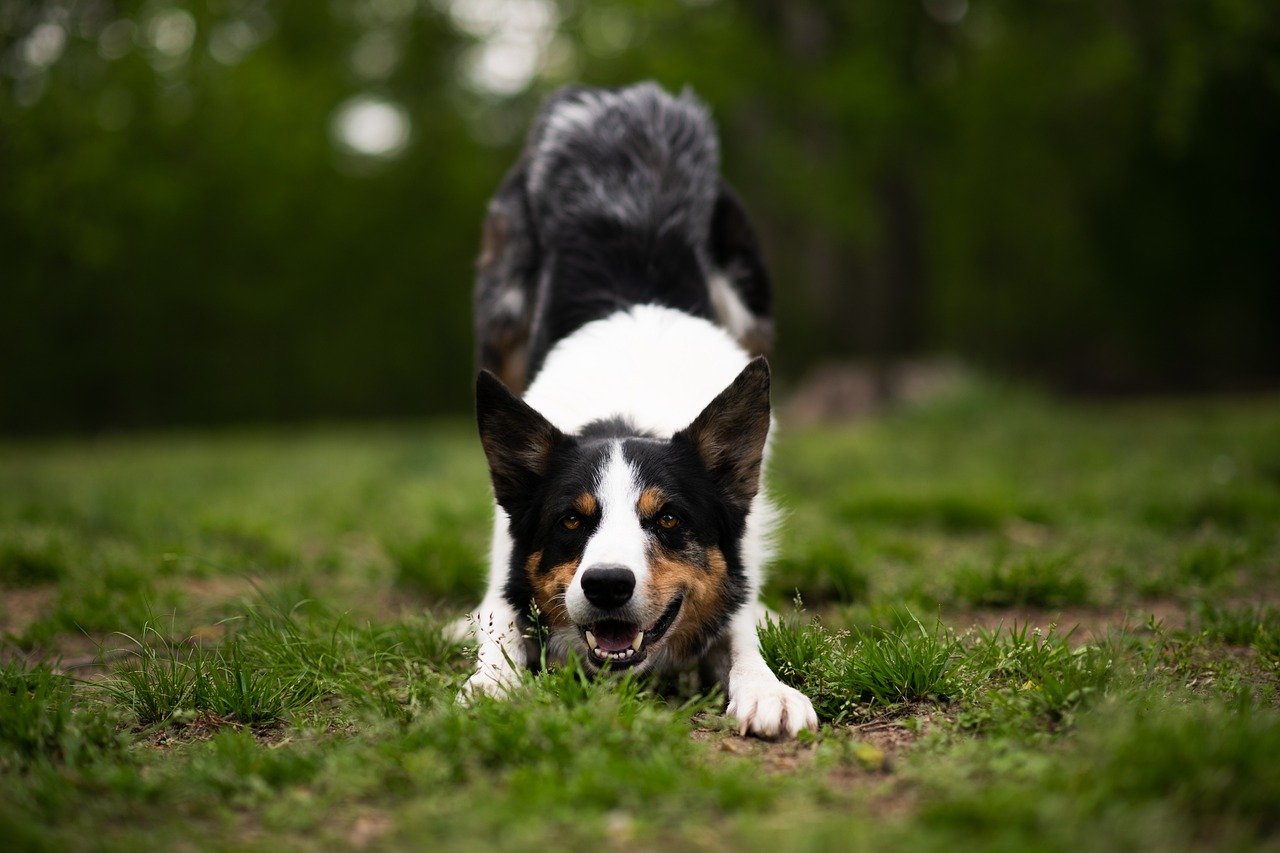
Building Community Through Social Media
Social media has become a vital tool in building a thriving community of pet lovers and advocates. By creating a space where individuals can connect, share experiences, and support one another, platforms like Facebook, Instagram, and Twitter have transformed the way we view pet adoption. Have you ever scrolled through your feed and stumbled upon a heartwarming story of a rescue pet finding their forever home? These moments not only tug at our heartstrings but also encourage others to consider adopting. When people see their friends and family sharing these stories, it creates a sense of urgency and excitement around the idea of bringing a pet into their lives.
Moreover, social media allows shelters and rescues to engage with their communities on a personal level. They can share updates about available pets, upcoming events, and success stories that resonate with potential adopters. This continuous engagement fosters a sense of belonging among followers. It’s like being part of a big, furry family where everyone shares the same passion for animal welfare. When shelters post about local events, they can rally the community together, encouraging participation and fostering connections that might not have occurred otherwise.
One of the most effective ways to build community is by promoting local adoption events through social media. These events not only allow potential adopters to meet pets in person but also provide a platform for networking among pet lovers. Imagine a sunny Saturday afternoon where families gather at a local park, all united by their love for animals. These gatherings can be promoted through engaging posts, enticing graphics, and even live videos that showcase the pets available for adoption. The buzz created online can significantly increase attendance, leading to more successful adoptions.
Another powerful aspect of social media is the encouragement of user-generated content. When adopters share their experiences and photos of their new furry friends, it creates a ripple effect. Other potential adopters see these posts and are inspired to consider adoption themselves. It’s like a chain reaction of love and compassion that spreads through the community. By creating specific hashtags, shelters can easily track and share these stories, further amplifying their reach. For instance, a shelter might create a hashtag like #AdoptedAndLoved to compile all these heartwarming stories in one place, making it easy for others to see the joy that comes from adopting a pet.
In addition to sharing success stories, shelters can also engage their audience by asking questions and encouraging discussions. This not only keeps the content fresh but also allows followers to feel like they are an integral part of the conversation. Whether it’s asking for advice on pet care or sharing funny pet moments, these interactions build a strong sense of community and trust. The more people feel connected, the more likely they are to support each other and the cause of pet adoption.
Ultimately, social media has the power to transform the landscape of pet adoption. By fostering a sense of community, shelters can create a supportive environment that encourages more people to consider adopting. It’s not just about finding homes for pets; it’s about building relationships, sharing stories, and creating a movement that celebrates the bond between humans and animals.
| Question | Answer |
|---|---|
| How can I get involved in local pet adoption events? | Follow your local shelters on social media to stay updated on events, volunteer opportunities, and ways to help promote adoption. |
| What types of content should shelters post on social media? | Shelters should focus on engaging visuals, success stories, behind-the-scenes content, and interactive posts that encourage community involvement. |
| Can social media really impact pet adoption rates? | Absolutely! Social media expands reach and visibility, allowing shelters to connect with a broader audience and increase awareness about available pets. |
Creating Local Adoption Events
When it comes to pet adoption, nothing beats the excitement of a local event. Imagine walking into a lively space filled with wagging tails, purring kittens, and the laughter of families coming together to find their new furry friends. is not just about showcasing pets; it’s about building a community around the love for animals and making connections that can last a lifetime.
To kick things off, shelters and rescue organizations can utilize social media platforms to promote these events effectively. By creating eye-catching posts that highlight the details—such as the date, time, and location—organizations can reach a broader audience. But it doesn’t stop there! Engaging visuals, like photos of the adorable pets available for adoption, can draw in more attendees. Think of it as setting the stage for a grand performance where each pet is a star waiting for their moment in the spotlight.
Moreover, local adoption events can serve as a fantastic opportunity for potential adopters to meet the animals in person. This face-to-face interaction can significantly influence their decision-making process. It’s one thing to see a cute dog on a screen, but it’s entirely another to feel that instant connection when a pup jumps into your lap, tail wagging furiously. This emotional bond is often the catalyst for adoption, transforming a casual visitor into a proud pet parent.
Additionally, incorporating fun activities can make these events even more appealing. Consider hosting competitions, such as “Best Trick” or “Cutest Outfit,” which not only entertain but also encourage community involvement. You can also set up information booths that educate attendees about responsible pet ownership, the benefits of adopting, and the importance of spaying and neutering. This kind of knowledge-sharing can empower potential adopters and create a more informed community.
To further enhance the experience, offering refreshments and creating a welcoming atmosphere can make a huge difference. A simple table with snacks and drinks can encourage people to linger a little longer, giving them more time to interact with the pets and with each other. Remember, the goal is to create a memorable experience that encourages people to adopt and spread the word about the joys of pet ownership.
In conclusion, local adoption events are a powerful way to not only showcase pets in need of homes but also to foster a sense of community among animal lovers. By leveraging the power of social media to promote these events, shelters can ensure a successful turnout, leading to increased adoptions and a happier, healthier community of pets and their humans.
- How can I find local adoption events? Check your local animal shelters' social media pages or websites for announcements about upcoming events.
- What should I bring to an adoption event? It's good to bring a valid ID and any necessary paperwork if you plan to adopt on the spot. Also, consider bringing a leash or carrier if you are adopting a pet.
- Can I adopt a pet on the same day as the event? Many shelters allow same-day adoptions, but it's best to check their specific policies beforehand.
Encouraging User-Generated Content
In the digital age, one of the most powerful tools available to animal shelters and rescue organizations is user-generated content. This phenomenon occurs when individuals share their personal experiences, photos, and stories about their pets on social media platforms. By encouraging adopters to showcase their furry friends, shelters can create a vibrant community that not only highlights the joys of pet ownership but also inspires others to consider adoption.
Imagine scrolling through your social media feed and seeing a friend post a heartwarming video of their newly adopted dog playing fetch in the park. It's not just a cute moment; it's a testament to the joy that comes from adopting a pet. This type of content resonates deeply with viewers, often stirring emotions that lead to action. When potential adopters see real-life examples of happy, adopted pets thriving in their new homes, it can ignite a spark of interest in their hearts.
To effectively harness the power of user-generated content, shelters can implement several strategies:
- Social Media Challenges: Organizing fun challenges, such as a photo contest for the cutest pet or a “before and after” adoption story, can encourage adopters to share their experiences. These challenges not only boost engagement but also create a sense of community among pet owners.
- Dedicated Hashtags: Creating a unique hashtag for your shelter can help consolidate user-generated content. For instance, something like #AdoptedAt[YourShelter] allows you to easily track and share posts from happy adopters.
- Feature Adopters: Regularly spotlighting adopters and their pets on the shelter's social media pages can motivate others to share their stories. This not only showcases the success of the adoption program but also makes adopters feel valued and appreciated.
By fostering an environment where adopters feel encouraged to share their journeys, shelters can create a ripple effect that extends beyond their immediate community. Each post, each story shared, acts as a beacon of hope for animals still waiting for their forever homes. It’s like a chain reaction; one happy story leads to another, and before you know it, you've created a movement.
Moreover, user-generated content can also serve as invaluable feedback for shelters. By observing what types of posts resonate most with the community, shelters can refine their outreach strategies and content creation efforts. This not only enhances their social media presence but also strengthens the bond between the shelter and the community it serves.
In conclusion, encouraging user-generated content is a win-win situation. It empowers adopters, enriches the shelter's social media presence, and ultimately leads to more pets finding loving homes. So, let’s embrace the stories of those who have already taken the leap into pet adoption and inspire others to follow suit!
1. How can shelters encourage user-generated content?
Shelters can encourage user-generated content by organizing social media challenges, creating dedicated hashtags, and featuring adopters on their pages.
2. Why is user-generated content important for pet adoption?
User-generated content showcases real-life adoption success stories, which can inspire potential adopters and create a sense of community among pet owners.
3. What types of posts should shelters look for from adopters?
Shelters should look for heartwarming stories, before-and-after photos, and videos that highlight the joy of pet ownership.
4. How can shelters track user-generated content?
By using unique hashtags and engaging with their community, shelters can easily track and share user-generated content on their social media platforms.
Frequently Asked Questions
- How does social media help in pet adoption?
Social media platforms allow shelters and rescues to reach a wider audience, making it easier to connect with potential adopters. By sharing engaging content, including heartwarming stories and adorable pet photos, shelters can spark interest and encourage people to consider adoption.
- What types of content are most effective for promoting pet adoption?
Engaging content strategies include visual storytelling, success stories of adopted pets, and behind-the-scenes glimpses of shelter life. High-quality images and videos can capture attention, while sharing inspiring tales of pets finding their forever homes can motivate others to adopt.
- Can influencers really make a difference in pet adoption rates?
Absolutely! Partnering with social media influencers can significantly amplify the message of pet adoption. Their established follower base can help spread awareness and attract new adopters who might not have been reached otherwise. It's like having a megaphone for your cause!
- What role does community play in pet adoption?
Social media fosters a sense of community among pet lovers, allowing them to share experiences, advice, and support. This connectedness can lead to increased adoption rates as people feel encouraged by others' success stories and are motivated to take the plunge themselves.
- How can shelters promote local adoption events effectively?
Promoting local adoption events through social media is key! By creating buzz with posts that highlight the event's details, sharing countdowns, and encouraging community members to invite friends, shelters can drive attendance and create meaningful interactions between potential adopters and pets.
- What is user-generated content and why is it important?
User-generated content refers to photos and stories shared by adopters about their experiences with their pets. This type of content is important because it builds a sense of belonging and community, encouraging others to consider adopting a pet by showcasing the joy and fulfillment that comes with it.

